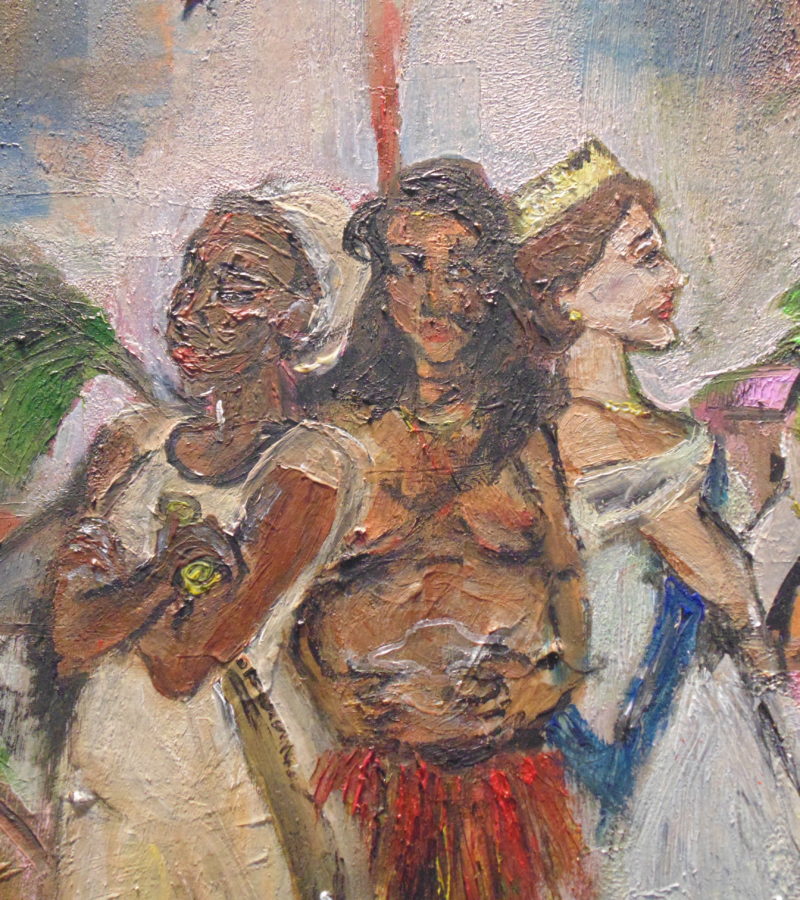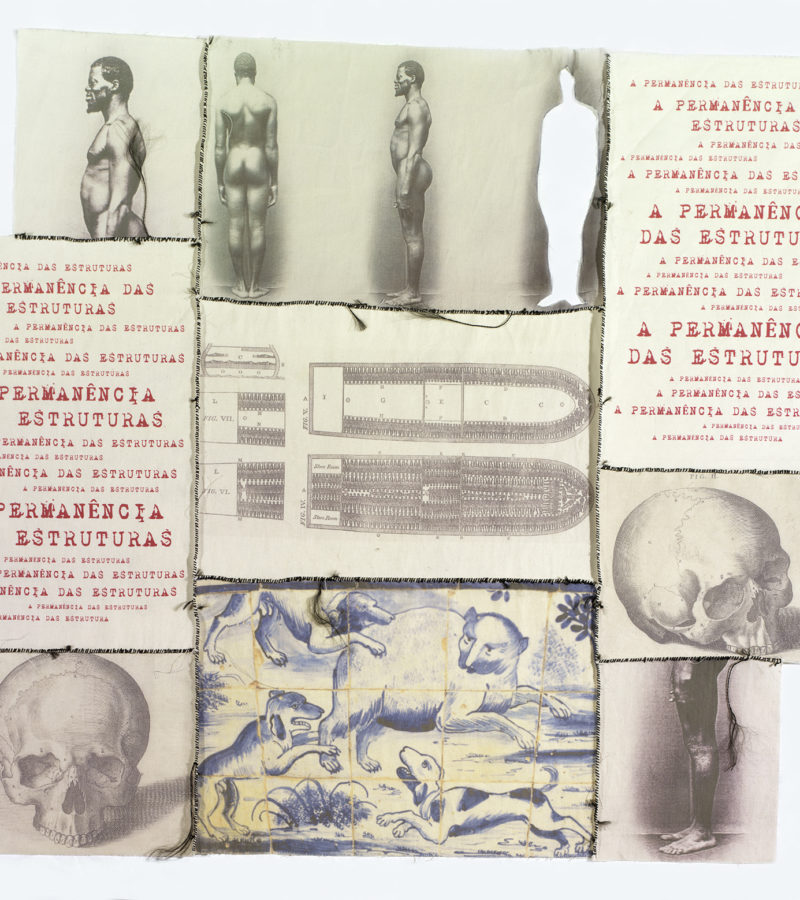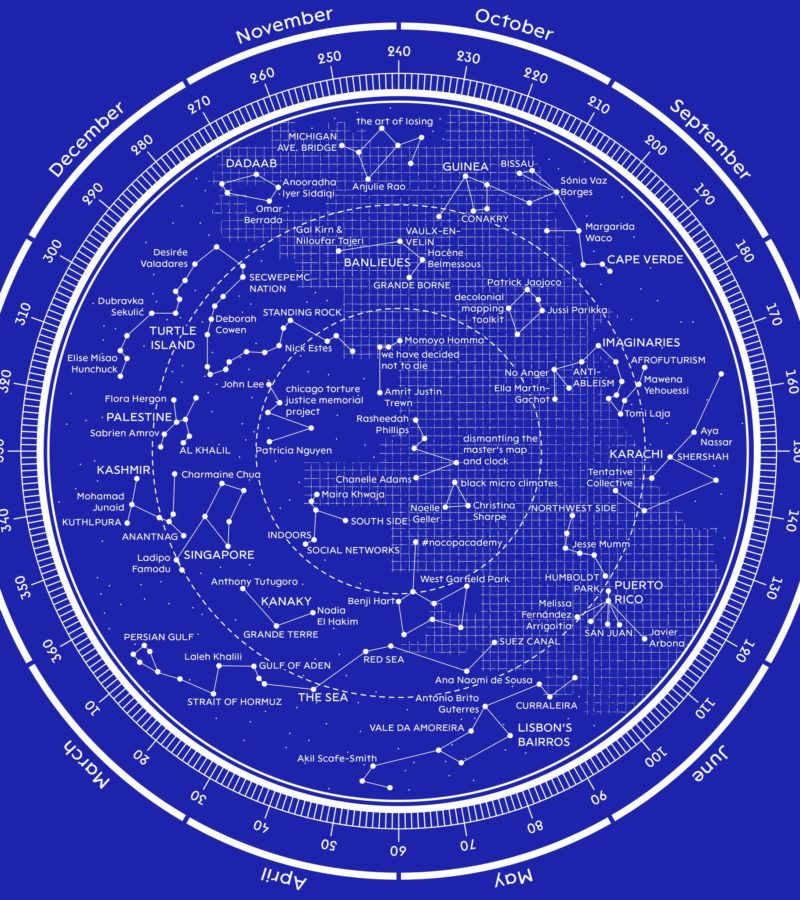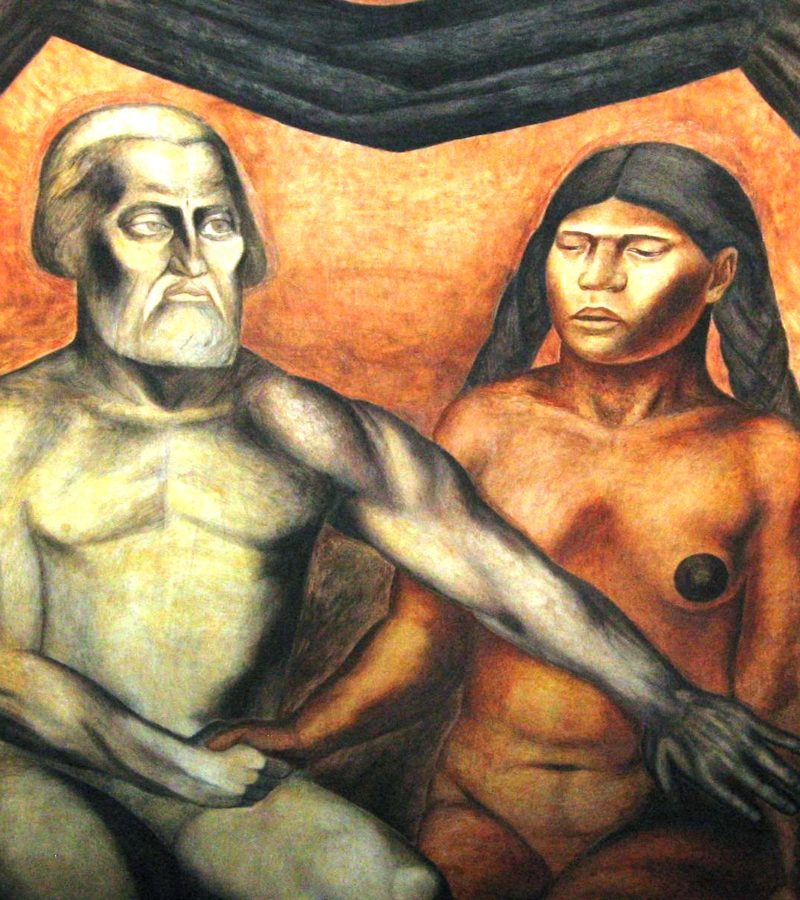Since the historic avant-garde of the eighteenth century, a series of divisions has been established separating handicraft and art, the latter being considered a refined, static, and intellectualised pleasure in exclusive terms, according to the model of subjective contemplation. These historical ideas of the aesthetic rest on Eurocentric and anthropocentric notions of perception inherited from the tradition of rational thinking and justified by Kant as a new type of pleasure, special to Western philosophical contemplation. These aesthetics, grounded in distance and disinterest, separate contemplation from the action of doing or praxis; positioning legitimated high art in opposition to popular handicrafts, undermining plurality by failing to understand the communitarian logics of our peoples in Latin America.
These dynamics of separation or hierarchisation have been replicated and applied to all artistic formations in Latin American countries, advancing a universal history of culture through a pyramidal, unified and whitened education. This logic of perception, which denies what is ours by simply absorbing the educational institution’s instruction, has turned us into mere consumers of a school of thought while we are separated from its logics. It is structured in a limited, restricted, regulated and elitist way, which has denied local, regional, and national knowledge in Latin America. This pyramidal hierarchy of a discriminatory education, focused on contemplating superficial beauty; on describing things according to its limited logic of perception, fails to understand the act of making or feeling with one’s hands; of sharing forcefields or spaces for developing subject-object relation. This is something we could have understood through our own logics; using our own local, national and international terminologies.
![[Description: Six small wooden bowls lined up on a right diagonal angle leading from foreground to the white background, each filled with sand. One black, wooden rod in the center of each bowl. Near the base of these rods are threaded wooden bearings.]](https://www.afterallartschool.org/wp-content/uploads/2021/03/Spinning-Wheels-1-1920x1811.jpg)
At this point I ask myself, as a community artisan and artist, and together with my fellow weavers: what is art? Within the framework of our own reflections and analyses, we focus on the linguistic terms of understanding that are most appropriate to defining art in our villages. From the perspective of decoloniality, we travel together in constant self-reflective conversations, with a sense of familiar, communal, cultural and age-old education, transmitted from one generation to another in a visual, sensory, and tactile manner in the village or community. All knowledge inherited from our ancestors has been denied in the ordinary classrooms of formal education, making it difficult to understand and integrate with our own thoughts. For this reason, we were left on a journey of self-reflection to find ourselves on our own terms. We found ourselves with the word uywaña, which integrates all mutual creations: ali yuwaña, the mutual creation of plants; uywa uywaña, the mutual creation of animals; yanaka uywaña, the mutual creation of subject-objects; taqi kuna uywaña, the mutual creation of everything, which broadens our vision by making us understand the interconnectedness of self-awareness, its situation within a network. It makes us always conscious of taking the utmost care of the earth, plants and animals of the universe, which provide us with the raw materials to create yet further object-subjects. This is a constant and dynamic self-reflection. Thanks to this understanding, we proceed with the term jaqichaña: gathering the raw materials required for elaborating the subject-object; gathering the necessary instruments for the gestation or development of the subject-object; carrying out the selection and pre-selection with the utmost care when gestating raw materials. Our thoughts are continually learning from the behavior of raw materials, which are believed to have a character of their own that must be read with many tactile sensibilities – perceptions of textures, colours, and scents. We then move on to the word luraña, a field of action, of doing things, which we will look at in more detail in what follows.
Jiwasan amayusa
The thinking of our philosophers
This is a work inspired by the visual education that takes place in Andean communities, a permanent form of instruction that passes from generation to generation – from grandmothers to girls and boys. Learning to spin is very different from the experience of regular classrooms with their blackboards and screens, apparatuses of logics less at home in the communal environment. The grandmothers’ instruction says: ‘look at how the spinning wheel turns’, ‘look at how your fingers feel’, ‘listen as your body receives’, ‘listen as the spinning wheel turns and sings in your fingers’. ‘Let your fingers feed on the textures to be able to identify things’, ‘listen to how the blood flows through your body as you spin’, ‘look at how your feet walk as you spin’. Nothing is done without a reason; everything is interconnected. Learning from the wool, the spinning wheel and our bodies induces us to participate in the different actions that train us to awaken other abilities and learn thoroughly in a visual and sensory school.
For the thread to get through, everything must follow the spinning wheel’s movement – the movement of the fingers, the hands, the body. Feeling the textures, inhaling the aroma of wool, thinking about this whole set of actions; all of this enables the kind of multidisciplinary learning that allows us to feel that the wheel is not just an instrument, but also a living being that inspires and guides us so that we can get the thread of life through.
In honor of our great weaving masters.
QAPUÑ YATIQAÑA / Learning to spin
Chiwjamaw t’arwa / wool or fur that resembles clouds
Irpa qapu / the spinning wheel that guides you
QAPU IRPA/ The spinning wheel that leads you
Qapunt iñjaña / to see with the wheel
Qaput amayuña / to feel with the wheel
Qapunt amayt’aña / to think with the wheel
Qaput isapt’aña / to listen with the wheel
Qapunt Katuqaña / to receive from the wheel
Qapunt sartaña / to guide through the wheel
The slow turning of the wheel makes the thread’s perfection
Much’tam suq’tam / Pull and caress so that the thread is perfect
The fast-spinning wheel makes the thread strong
The feeling of things makes you a master.
This process of involvement takes in different perspectives, both from artistic and theoretical practices. Since the Eurocentric historical avant-garde, there have been certain mandatory readings for all students of Fine Art, which support the conception of art around theories of the ‘essence’ of beauty its perception. This philosophy, which investigates the origin of ‘pure’ feeling and its manifestation as art, entails a study of differentiated ‘taste’, which always denotes the exclusionary divisions of institutionalised art. Something similar occurs with exhibitions in museums: specialists and curators focus only on the most beautiful and best-preserved objects (from their point of view), disregarding an entire operational chain. This limitation stems from learning vertically from texts instead of doing and feeling things. The alternative dynamic could lead to a collective formation in which the artists and artisans within communities work together with those in charge of museums, or with specialists in different fields, cultivating new way of seeing life environments. This process would be connected with the operational chains that underlie it, starting with the mutual creation, procurement and treatment of raw materials; with techniques for elaborating subject-objects and their social life – that is, their interactions with a person, family or village. Were narratives to be produced according to this system, we would see things in a new ways, rather through the common lens of ‘beauty’.
We saw a close example of the importance of this in a visit to the museum by the weavers, who found it difficult to read the textiles since they were glued to hoops and hung on the wall as if they were paintings. According to the weaving masters, this made it difficult to read their structures and techniques in detail. We then chose to work with glass panels with a front and back view, according to the textile’s complexity, to facilitate its more complete reading. According to the producers, three-dimensional reading, rather than simplifications made by curators, is very important for all objects. The producer and specialist museographer should work on such things together, in a proper balance that does not reduce works through inappropriate language. This new dynamic shows the frailty of university specialists who dedicate themselves to reading texts rather than learning about material culture’s processes and procedures of making and feeling, in mutual languages with our great masters. If we are to achieve better integration, we need to build a bridge that unites practice and theory, thus communicating a broader and more educational language to society.


![[Description: Black and white photograph of people looking out of a window]](https://www.afterallartschool.org/wp-content/uploads/2021/03/Thomaz-Farkas_Rahul-Rao-800x900.jpg)
![[Description: Valeska Soares, Duplaface (Branco de titânio), 2017. Oil and cutout on existing oil portrait, 71 x 56cm. Courtesy MASP]](https://www.afterallartschool.org/wp-content/uploads/2021/03/Osmundo_Valeska-Soares-800x900.jpg)

